Lavender specifications
- Scientific name : Lavandula angustifolia
- Order : Lamiales
- Family : Lamiaceae
- Subfamily : Nepetoideae
- Tribe : Ocimeae
- Genus : Lavandula
- Native : Mediterranean, the Middle East, and India
Lavender flower , (genus Lavandula), genus of about 30 species of plants in the mint family (Lamiaceae), native to countries bordering the Mediterranean. Lavender species are common in herb gardens for their fragrant leaves and attractive flowers.
The plants are widely cultivated for their essential oils, which are used to scent a variety of products. English lavender (Lavandula angustifolia), French lavender (L. stoechas), and woolly lavender (L. lanata) are among the most widely cultivated species.
Lavenders are small evergreen shrubs with gray-green hoary linear leaves. The purple flowers are sparsely arranged on spikes at the tips of long bare stalks and produce small nutlet fruits. The fragrance of the plant is caused by shining oil glands imbedded among tiny star-shaped trichomes (plant hairs) that cover the flowers, leaves, and stems. The plants in cultivation do not usually produce seed, and propagation is accomplished by cuttings or by dividing the roots.
read more : Everything about sea lavender flower : How to Plant & care for them
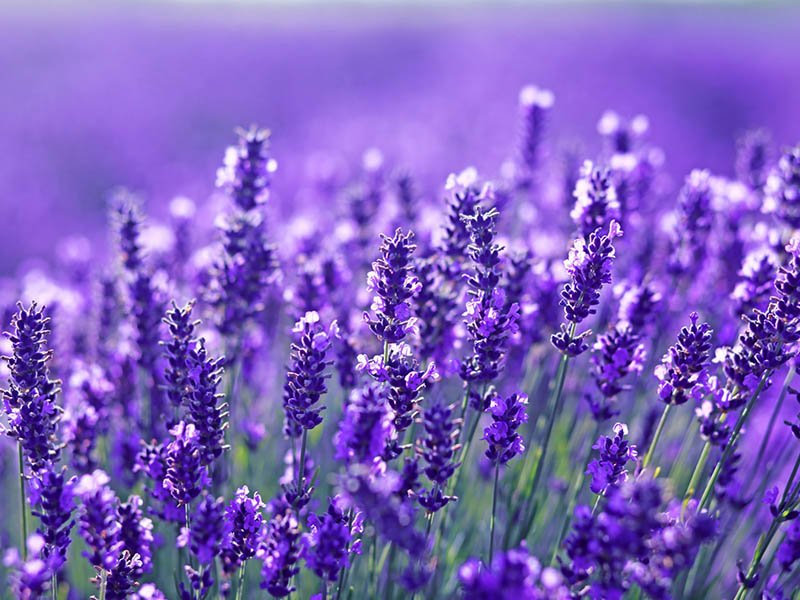
The genus includes annual or short-lived herbaceous perennial plants, and shrub-like perennials, subshrubs or small shrubs. Leaf shape is diverse across the genus. They are simple in some commonly cultivated species; in other species, they are pinnately toothed, or pinnate, sometimes multiple pinnate and dissected. In most species, the leaves are covered in fine hairs or indumentum, which normally contain essential oils.
Flowers are borne in whorls, held on spikes rising above the foliage, the spikes being branched in some species. Some species produce colored bracts at the tips of the inflorescences. The flowers may be blue, violet or lilac in the wild species, occasionally blackish purple or yellowish. The calyx is tubular. The corolla is also tubular, usually with five lobes (the upper lip often cleft, and the lower lip has two clefts).
Lavender is produced as a wild flower and cultivated in some countries. But in Iran it is cultivated only, it is also cultivated in an area of less than ten hectares.Lavender cultivation has been done in recent years for medicinal, cosmetic, health and decorative uses in the country.
Lavender in Iran has two perennial and woody species, L. stricta and L. sublepidota, which grow in the southern regions of Iran, and L. sublepidot is the exclusive species of Iran.
read more : Everything about chamomile flower : How to Plant & care for them
Although all lavender is native to the Mediterranean, there are different types of this plant that differ in color, flower bloom, flower shape and different sizes. The flowering time of this plant can be significantly different in different places.
Where a lavender flower blooms in early June, just a few miles away can have very different results. Contrary to the name of this plant, not all lavender is purple. Some of them are seen with other colors such as pale pink, white and even yellow. The leaves can also vary in shape and color.
Scattering of lavender in the world
Lavender is native to the Cape Verde and the Canary Islands, southern and northwestern Europe, the eastern Mediterranean, and is also grown as an ornamental plant in North America.
This plant grows in East Africa and countries such as Iran, Canada, India (southeast), China, England and in Iran, this plant is a non-native plant. But in some areas such as Firoozabad region of Fars province, agriculture is cultivated. In other parts of the country such as Mazandaran, Tehran, Karaj, Arak and Isfahan, it is cultivated and used as an ornamental and medicinal plant.
Although lavender is a plant grown in the Mediterranean, it also grows well in England, which has a cool climate, and has long been a staple in English medicinal plants.
When does lavender bloom?
All types of lavender typically bloom in early to mid-summer and last for about three to four weeks. In colder regions, lavender should be planted in spring and early summer. In warmer areas, lavender should be planted in early fall to keep the roots cool and moist during the off-season.
read more : Everything about aster flower : How to Plant & care for them
Types of lavender
There are 12 types of lavender, which are classified into 45 different species. There are 450 genera of lavender, which are classified into 45 different species.
-
French lavender ( ballerina lavender )
This French lavender has very distinct bulbs and blooms white flowers that fade to pink and purple as the plant matures. It thrives in climates with mild summers and winters. It flowers as early as May then blooms twice more in June and late summer or early fall.
- Sun : full sun
- Water : low
- Soil : sandy
- Climate : mild summers and winters
- Hardiness zones : 8-9
- Producing provinces : Tehran, Khorasan Razavi, Semnan, Kerman and Chaharmahal and Bakhtiari
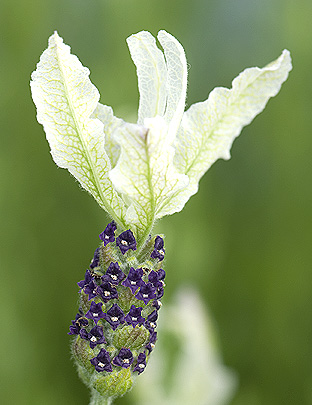
French lavender ( ballerina lavender )
-
Spanish Lavender ( Kew Red lavender )
This is a type of lavender that is more suited for warm to hot climates, which makes it ideal for hardiness zones eight and nine. This plant will grow to be up to two feet in height, and the sweet-smelling purple blooms that can be seen slightly resemble rabbit ears.
- Sun : full
- Water : low
- Soil : sandy
- Climate : mild summers and winters
- Hardiness zones : 7-9
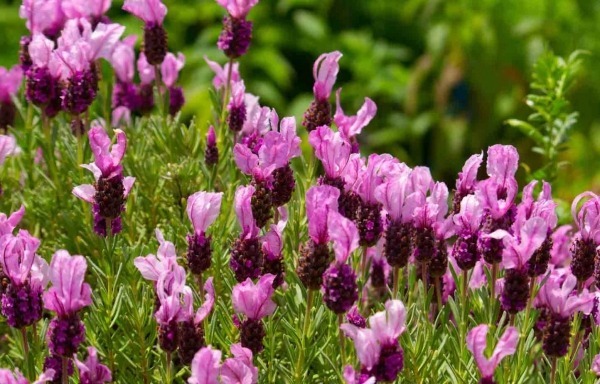
Kew Red lavender
-
Anouk lavender
Blooming earlier than most French lavender, the Anouk flowers from early to mid-spring and has plump deep purple heads with lighter purple petals. This lavender can also withstand hotter summers than other types.
- Sun : full
- Water : low
- Soil : drought resistant
- Climate : hot summers and mild winters
- Hardiness zones : 6-10
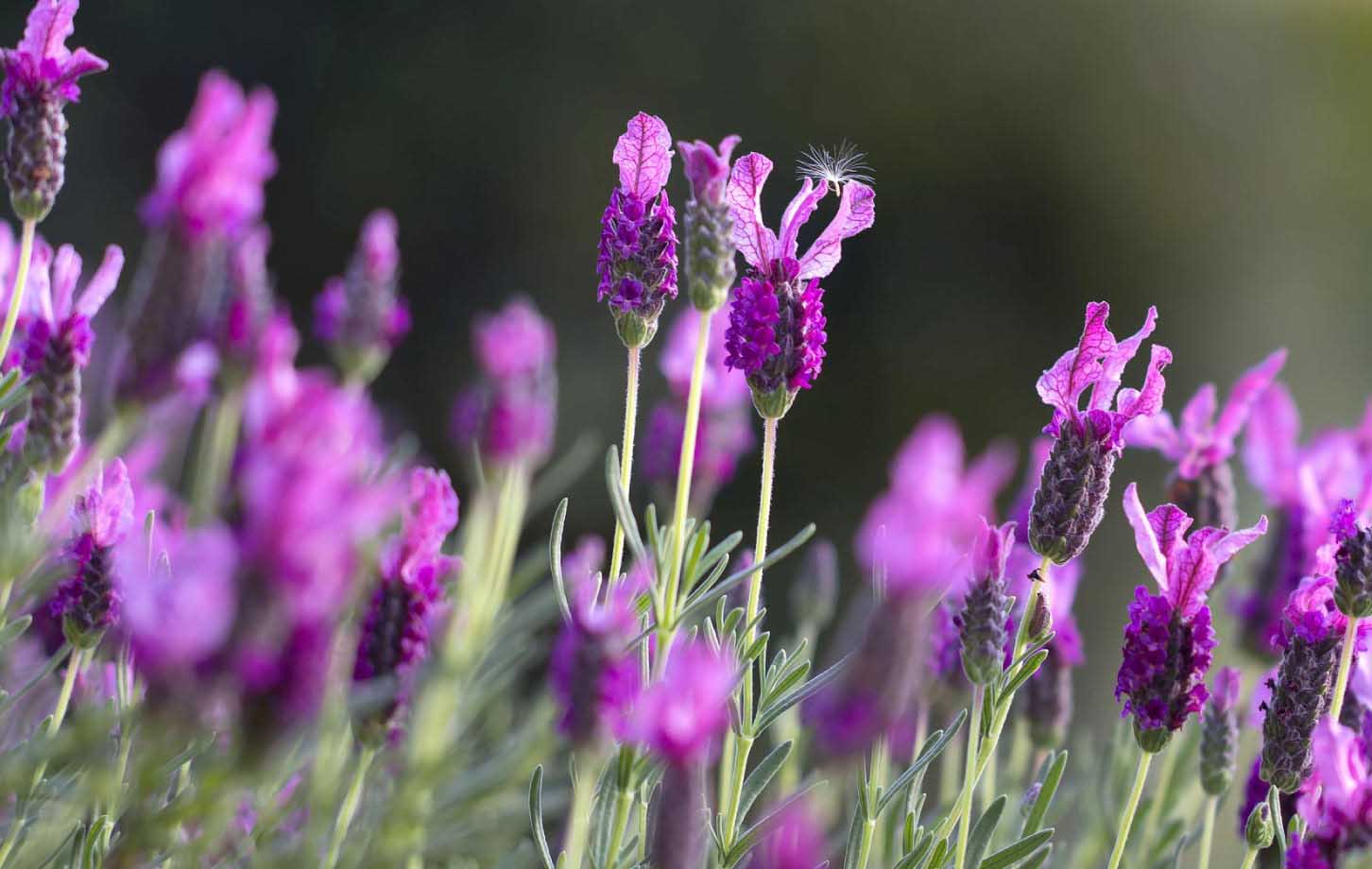
Anouk lavender
read more : Everything about cosmos flower : How to Plant & care for them
-
Blue Betty Lavender
The flowers on Betty’s Blue are quite large and colored in deep violet-blue. The plants are dome-shaped and compact. This variety of lavender has a very sweet fragrance and only blooms once in the middle of the summer. Since the flowers are so fragrant, they are usually dried and used in potpourris.
- Sun : full
- Water : low
- Soil : sandy
- Climate : mild summers and winters
- Hardiness zones : 5-9
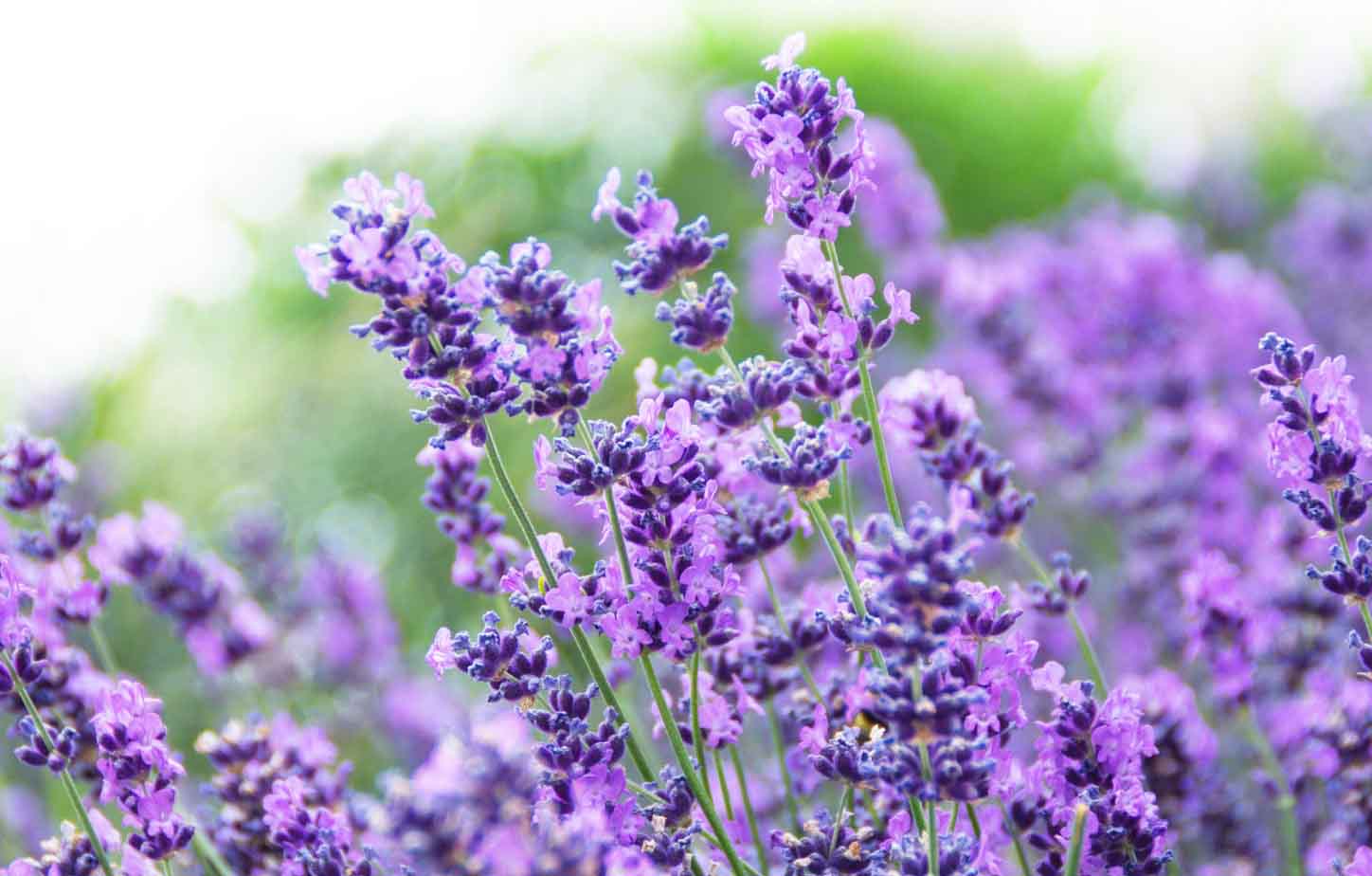
Blue Betty Lavender
-
English lavender
A very unique variety of lavender, the flowers are pom-pom shaped and very dense. They are extremely fragrant with a popping light purple color. Known as one of the most beautiful strains of lavender, the plant blooms in mid to late spring. Lavenite Petite attracts many butterflies and bees.
- Sun : full
- Water : low
- Soil : sandy
- Climate : warm summers and winters
- Hardiness zones : 5-9
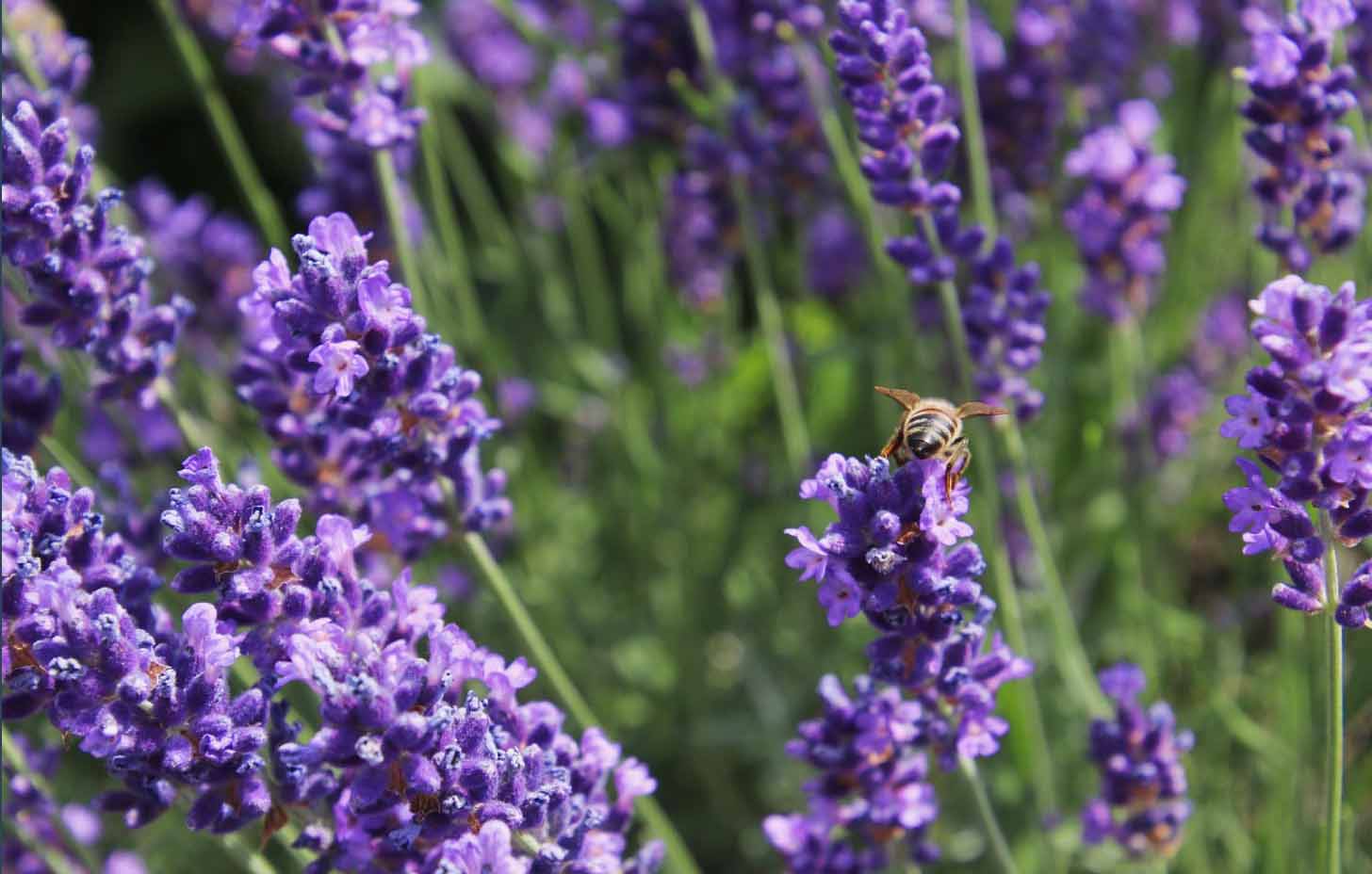
English lavender
-
Hidcote lavender
One of the more popular types of lavender, Hidcote blooms dark purple flowers and has contrasting blue-green foliage. When this lavender is dried, the flowers keep their color, which is great for crafts and decorations. The plant blooms in late spring or early summer depending on the climate.
- Sun : full
- Water : low
- Soil : sandy
- Climate : warm summers and winters
- Hardiness zones : 5-9

Hidcote lavender
read more : Everything about yarrow flower : How to Plant & care for them
-
Impress purple lavender
This lavender is popularly used in bouquets for its bunches of dark purple flowers that are quite long. The flowers are the richest purple of all lavenders. To enhance blooming, removing faded flowers will do the trick. The lavender blooms from mid to late summer and is highly fragrant.
- Sun : full
- Water : low
- Soil : sandy
- Climate : hot summers and warm winters
- Hardiness zones : 6-8
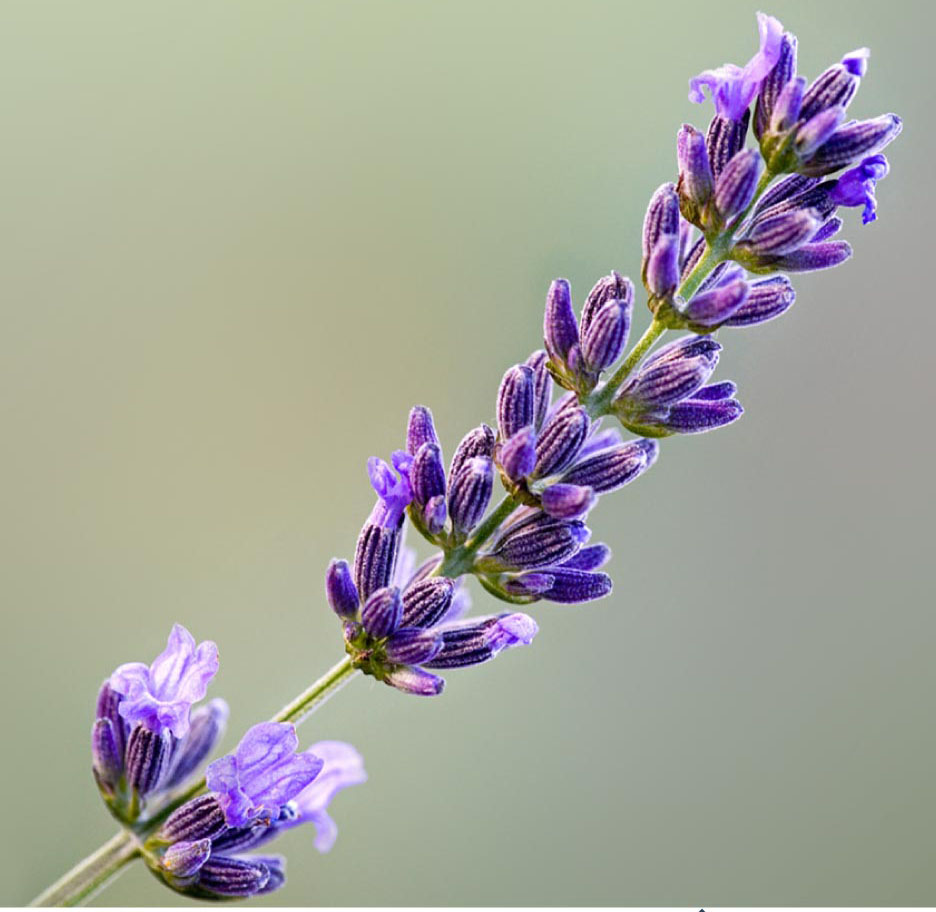
Impress purple lavender
-
Hidcote Giant lavender
This lavender has light violet flowers that tower on long steps and spread beautifully. Hidcote Hiant is an award-winning lavender for not only its beauty but also its strong fragrance. This lavender is popularly used in bouquets. It tends to bloom mid to late summer and is a magnet for bees and butterflies.
- Sun : full
- Water : low
- Soil : sandy
- Climate : mild summers and winters
- Hardiness zones : 5-8
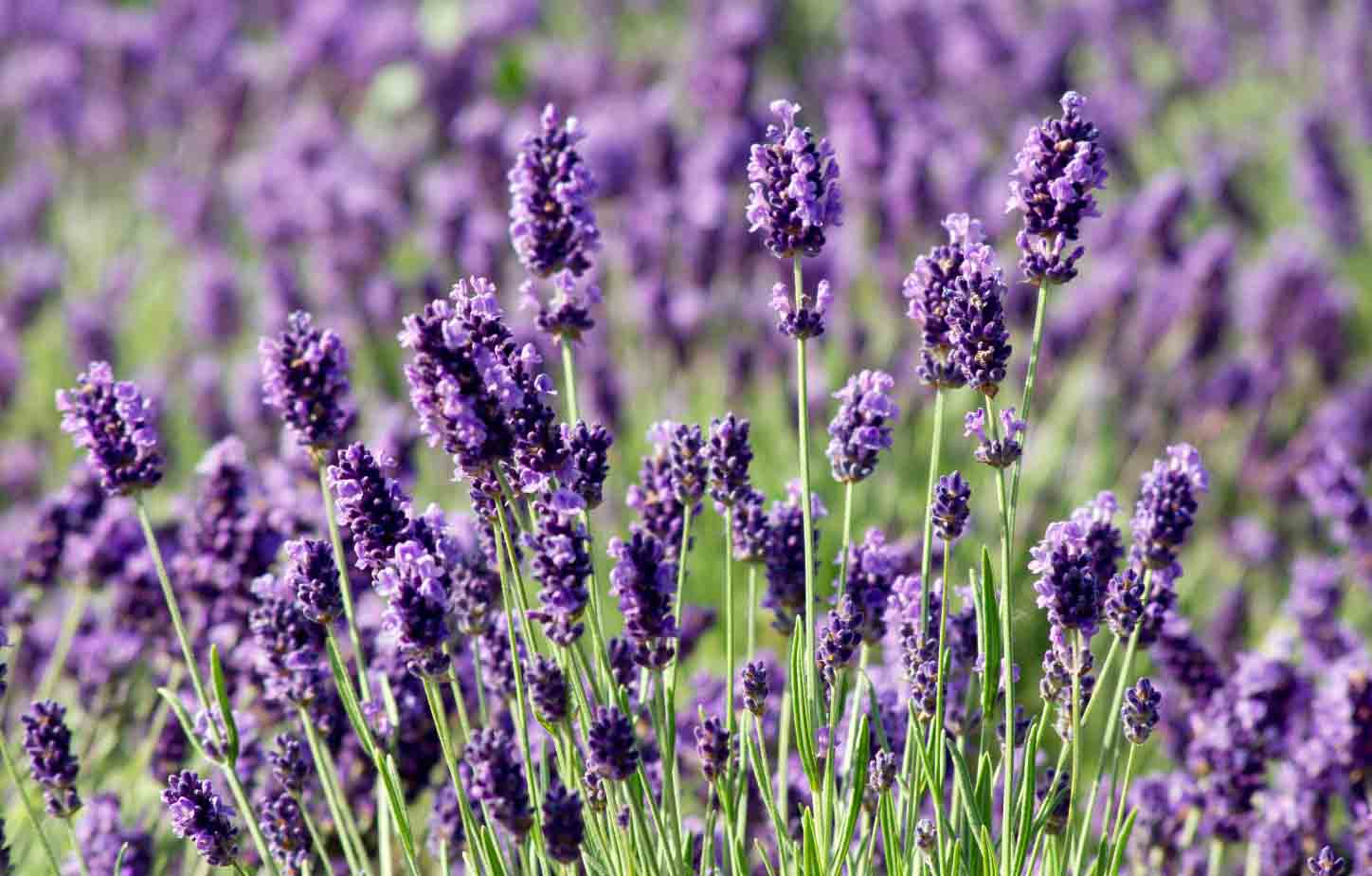
Hidcote giant lavender
-
Grosso Lavender
Grosso is a tall variety of lavender standing at about two feet tall. The blossoms are a very dark purple with narrow fragrant leaves. This variety can withstand cold winters as low as 15ºF and can last for years if pruned directly after flowering in the late summer. Grosso is very commonly used to extract lavender oil.
- Sun : full
- Water : low
- Soil : sandy
- Climate : mild summers and cold winters
- Hardiness zones : 5-8

Grosso Lavender
read more : Everything about hemlock flower : How to Plant & care for them
-
Portuguese lavender or spike
Portuguese lavender, also known as spike lavender, has flowers that are simpler and more elegant than other types. The flowers produce small pale lilac bulbs in levels along the stem. This lavender is commonly used in culinary dishes and drinks. The leaves are sweetly fragrant and attract butterflies and bees.
- Sun : full
- Water : low
- Soil : sandy
- Climate : warm summers and winters
- Hardiness zones : 5-9

Portuguese lavender
-
Egyptian lavender
Egyptian lavender is also known as a fern-leaf lavender due to its furry bipinnate leaves. This variety has a different smell and is less sweet than others. The plant can be ignored once established as long as the lavender is planted in well-drained soil and has plenty of room to grow. The flowers blossom in late spring.
- Sun : full
- Water : low
- Soil : sandy
- Climate : mild summers and winters
- Hardiness zones : 8-11
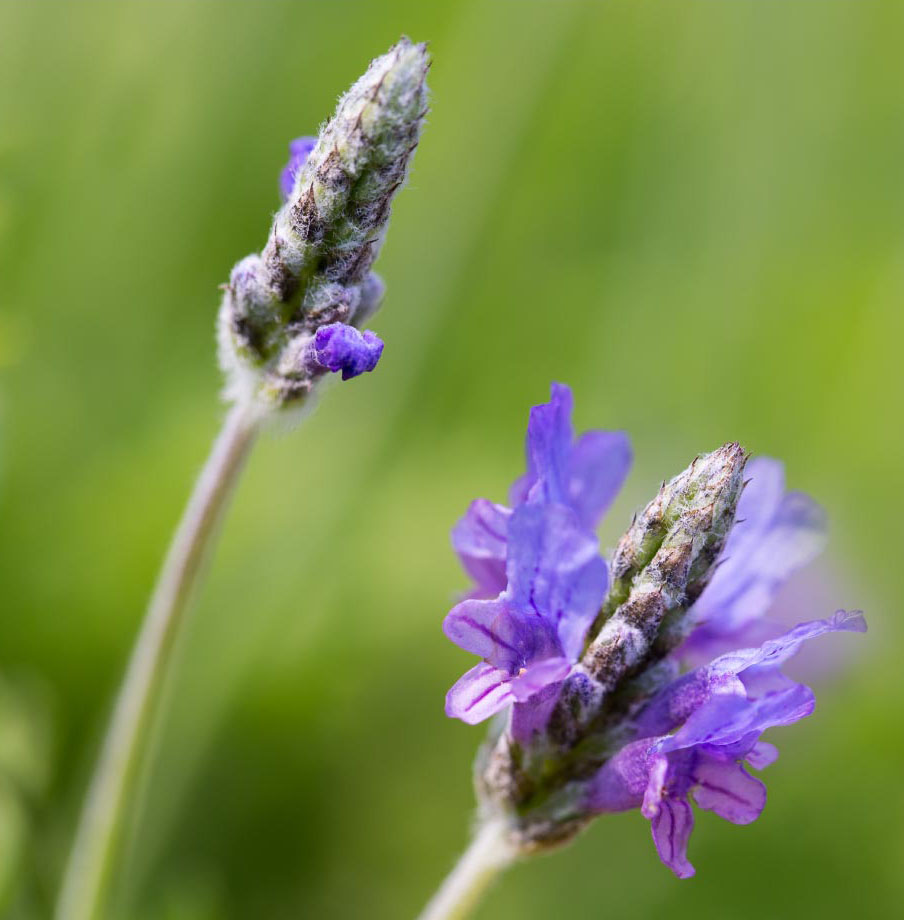
Egyptian lavender
read more : Everything about marigold flower : How to Plant & care for them
-
French Lavender (Lavandula Dentata)
French lavender is more delicate in smell and color than other lavenders. The blooms last the longest out of any type of lavender, throughout the entire summer and potentially through fall. This variety is quite large and will grow two to three feet tall and wide. Another major difference is that French lavender does not tolerate extreme temperatures.
- Sun : full
- Water : low
- Soil : sandy
- Climate : warm summers and winters
- Hardiness zones : 8-9
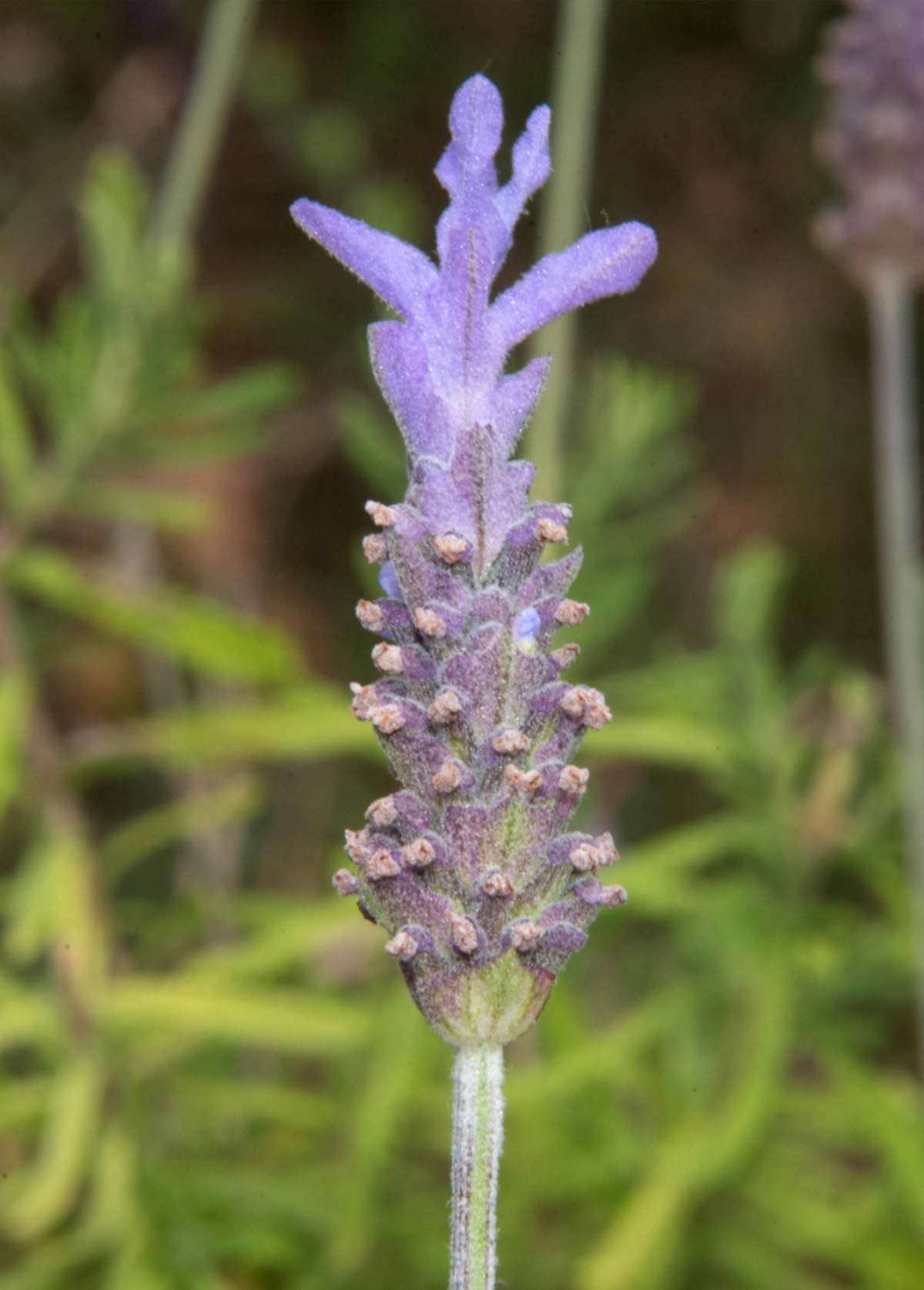
French Lavender (Lavandula Dentata)
How to propagate lavender
Propagation of this plant is done in the following three ways :
- Seed
- Cutting
- Layering
Propagated by seeds
- Choosing the right seed with high vigor is the best way to grow lavender.
- November or the second half of March is the time to sow seeds in the treasury.
- Late September to early October is the best time to transfer seedlings to the mainland.
read more : Everything about corn flower : How to Plant & care for them
Propagated by cuttings
Cuttings are done in two ways : greenhouse and open air.
- Greenhouse cuttings : In the greenhouse cutting method, young shoots are cut to a certain size. They are planted in a greenhouse, and after the cuttings have taken root in early spring, they are transferred to the main land.
- Outdoor cuttings : In November to March, the cuttings are separated from the plants and then the cuttings are placed in the soil. Rooted cuttings are transferred to the main ground in the fall.
Notice : Cultivation dates vary from place to place.
Harvest time
- In mid-August, lavender flowers appear.
- July and August are good times to harvest lavender flowers.
- To preserve the essential oil of the plant, it is better to dry the plant in the shade after harvest.
Countries exporting lavender
Most lavender is exported from France, Yugoslavia, Bulgaria and Spain to other parts of the world.
Export of Iran dried lavender flower
Iran is one of the richest countries in the world in terms of medicinal plants. Due to these types of medicinal plants such as lavender are processed in different forms and exported to other countries. In this regard, the export of lavender in the form of extract and essential oil as well as its dried flower is done. Dried lavender flower , in addition to its decorative aspect, has many applications in traditional medicine and health and perfume industries.
This has made it very popular in the world. The reasonable price of lavender flowers has caused the sale and purchase of lavender flowers to bring great profits to exporters and wholesalers of lavender flower and traders active in this field. Both types of lavender flower products can be exported either as fresh cut flowers or as dried flowers because each has its own customer.
read more : Drying natural flowers | Introducing 8 wonderful ways to dry flowers
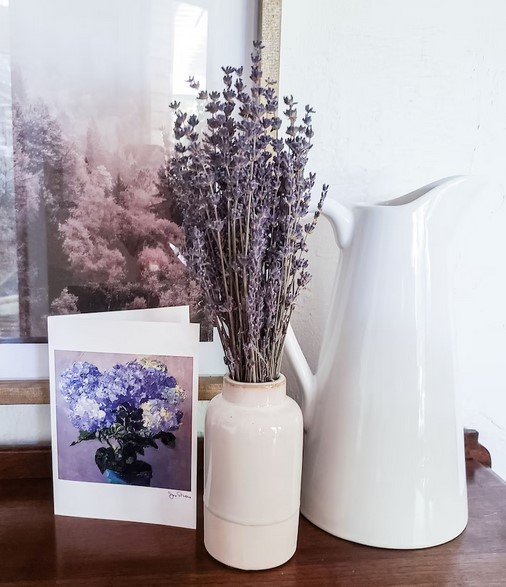
What factors affect the purchase price of foreign lavender ?
The buying and selling price of dried or fresh lavender in the market is determined by various factors. The fresher the lavender (this year), the more purple, the more fragrant it is. The cleanliness and purity of the product, the health of the lavender flocks, the amount of lavender cultivation and harvest in the country, fluctuations in the foreign exchange market and transportation costs, and… are other factors affecting the price of lavender.
read more : Everything about rose flower : How to Plant & care for them
Lavender plant packaging process
Nowadays, the post-harvest and packaging operations of herbal products, in addition to maintaining the quality and freshness of the product, cause market friendliness and maintain a competitive market. Packaging is one of the important processes in the post-harvest stage of agricultural products, including medicinal plants, which maintains the quantity and quality of the product during storage.
The most important benefits of medicinal plants packaging are :
- Increase product storage time
- Slowing down the rate of decline in the quality of herbal active ingredients over time
- Prevent moisture absorption of dried products
- Reduce the risk of internal, external and oxidative corruption
- Easier and faster shipping
Improper packaging of medicinal plants can cause changes in their active ingredients, which will ultimately reduce the quality of medicinal products or consumer dissatisfaction. Packaging is also considered as an important factor in attracting customers in competitive domestic and foreign markets.
However, due to the abundance of essential oils, lavender flowers should first be dried in machines or in the shade, and after being cleaned by processing units, they should enter the market in small bags (T-bags). Lavender is one of the plants that due to its unique aroma and taste can be used alone as one of the herbal teas in tea preparation centers or in combination with other plants.
Notice : This article translated by google form Persian language. If you have any question or need more information please contact us or add a comment at the bottom of this page.
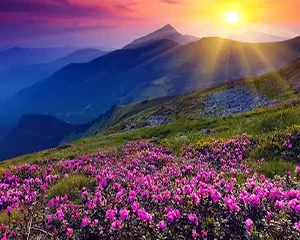
0 Comments